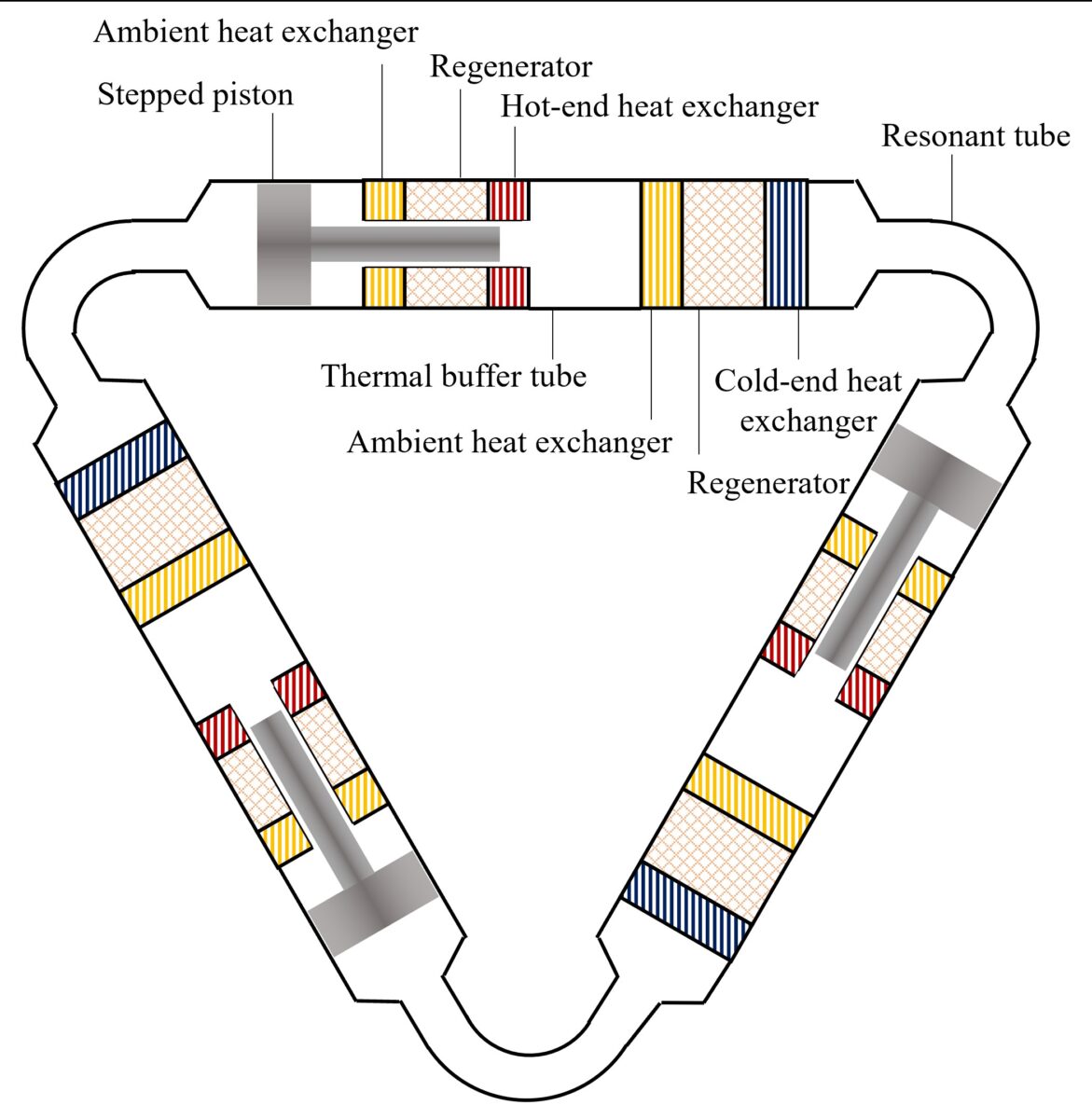A group of researchers led by the Chinese Academy of Sciences (CAS) has developed a heat-driven thermoacoustic refrigerator/heat pump (HDTAR/HDTAHP) for high heating-temperature operation. They described the system as a promising technology for low-carbon, high-efficiency and reliable cooling and heating.
“The system can be easily combined with PV energy,” the research's corresponding author, Ercang Luo, told pv magazine. “For instance, a considerable amount of waste heat can be produced during PV power generation and the waste heat can be utilized as the cold source in our thermoacoustic heat pump system and its temperature can be lifted to meet different heating supply demands.”
The scientists explained that HDTAR/HDTAHP systems use the reverse thermoacoustic effect for refrigeration or heat pumping and utilize helium or nitrogen as a working medium. An embedded thermoacoustic engine (TAE) uses the resonance of a standing wave in the working medium to convert heat into acoustic energy.
The proposed system was conceived with a direct-coupling configuration, which the research group said can help reduce the mismatch between the acoustic power generation of the TAE and the acoustic power consumption of the TAR/TAHP subunit. “Due to the energy flow mismatch, the extra acoustic power generation ultimately becomes energy loss in the thermoacoustic system, leading to the decline of working performance but not as it should be,” it explained.
The scientists used a stepped piston (SP) to separate the outlet acoustic power of the direct-coupling unit. This is intended to convey a part of acoustic power in the regenerator of TAE subunit and the rest of into the TAR/TAHP subunit, thus enabling the acoustical power matching.
“Both the outlet acoustic power from the TAE subunit and the bypassed acoustic power enter into the TAR/TAHP subunit. In the TAR/TAHP subunit, the acoustic power is consumed and the heat is continually pumped from the cold-side heat exchanger,” they stated, noting that the outlet acoustic power of the TAR/TAHP returns via a resonator to the inlet of the direct-coupling unit. “So far here to this extent, the system finishes a whole cyclic operation.”
Through a simulation via the one-dimensional calculating software Sage, the academics compared the perfomance of the system based on the SP with that or a reference device with a conventional mechanical piston, with both systems having a direct-coupling configuration and a cooling capacity of 1 kW.
Popular content
The testing showed that the system with the SP achieved a coefficient of performance (COP) of 1.694 while the reference device reached a value of only 0.6825. This is due to the fact that the heating temperature of the reference system is “seriously” limited by the ambient and cold-side temperatures. “Varying the heating temperature will cause the mismatch between the acoustic power generation in TAE subunit and acoustic power consumption in TAR/TAHP subunit, and eventually lead to the global cooling performance deterioration,” the researchers stressed.
They also noted that the proposed system may achieve a three times higher efficiency at heating temperature of around 500 C and explained that the enhanced heat-to-acoustic conversion efficiency in TAE subunit at higher heating temperature is responsible for the improvement of the cooling performance. “The novel configuration shows different acoustic field distributions because of the bypass component and can significantly decrease the exergy loss occurred in engine’s regenerator,” they concluded.
The system was described in the paper “A highly efficient heat-driven thermoacoustic system for room-temperature refrigeration by using novel configuration,” which was recently published in Applied Energy. “We haven't estimated and compared its cost with the traditional absorption refrgieration system, but it's believed that this refrigeration-heat pump system achieve in low-cost in the future,” Luo said.
This content is protected by copyright and may not be reused. If you want to cooperate with us and would like to reuse some of our content, please contact: editors@pv-magazine.com.



By submitting this form you agree to pv magazine using your data for the purposes of publishing your comment.
Your personal data will only be disclosed or otherwise transmitted to third parties for the purposes of spam filtering or if this is necessary for technical maintenance of the website. Any other transfer to third parties will not take place unless this is justified on the basis of applicable data protection regulations or if pv magazine is legally obliged to do so.
You may revoke this consent at any time with effect for the future, in which case your personal data will be deleted immediately. Otherwise, your data will be deleted if pv magazine has processed your request or the purpose of data storage is fulfilled.
Further information on data privacy can be found in our Data Protection Policy.